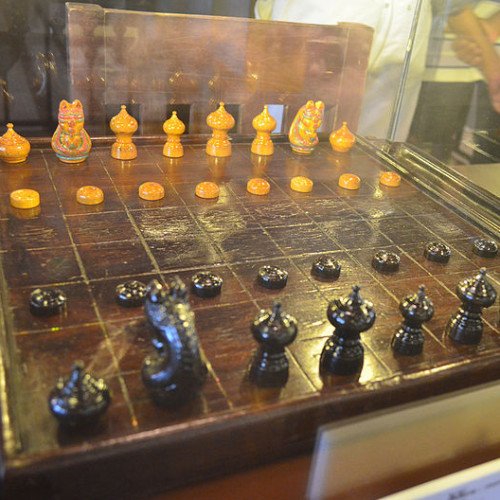A GAME OF WAR VS MAKRUK

A GAME OF WAR
A Game of War is a book by Guy Debord and Alice Becker-Ho that illustrates a game devised by Debord by giving a detailed account of one of their table-top conflicts. It was first published in French as Le Jeu de la Guerre in 1987, but unsold copies were later pulped in 1991, along with other books by Debord, at his insistence when he left his publisher Champ libre. The book was reissued in 2006, with an English translation published by Atlas Press in 2008. In his 1989 book Panegyric, Guy Debord remarked: So I have studied the logic of war. Indeed I succeeded long ago in representing its essential movements on a rather simple game-board… I played this game, and in the often difficult conduct of my life drew a few lessons from it — setting rules for my life, and abiding by them. The surprises vouchsafed by this Kriegspiel of mine seem endless; I rather fear it may turn out to be the only one of my works to which people will venture to accord any value. As to whether I have made good use of its lessons, I shall leave that for others to judge. Apart from the books which contain the game, free online versions of the game are available. London based group, Class Wargames have reproduced A Game of War and taken it on a campaign around the globe, at Belo Horizonte, pictured above, St. Petersburg and a variety of other locations.
Statistics for this Xoptio

MAKRUK
Makruk or Thai chess, is a board game that is descended from the 6th-century Indian game of chaturanga or a close relative thereof, and is therefore related to chess. It is classified as a chess variant. The word "ruk" (Thai: รุก) in Thai is thought to derive from "rukh" which means "chariot" in the Persian language (and is also the common origin of the name for a rook in western chess). The Persian traders came to the Ayutthaya kingdom around the 14th century to spread their culture and to trade with the Thai kingdom. It is therefore possible that the Siamese Makruk, in its present form, was directly derived from the Persian game of Shatranj via the cultural exchange between the two people in this period. This is because the movement of Makruk Thai's queen, or the "seed" (Thai: เม็ด), is essentially the same as the ferz in Shatranj. The disadvantaged player announces the counting of his fleeing moves, starting from the number of pieces left on the board, including both kings. The winning player has to checkmate his opponent's king before the maximum number is announced, otherwise the game is declared a draw. During this process, the count may restart if the counting player would like to stop and start counting again. For example, if White has two rooks and a knight against a lone black king, he has three moves to checkmate his opponent (the given value of 8 minus the total number of pieces, 5). If Black captures a white rook, the count does not automatically restart, unless Black is willing to do so, at his own disadvantage. However, many players do not understand this and restart the counting while fleeing with the king.